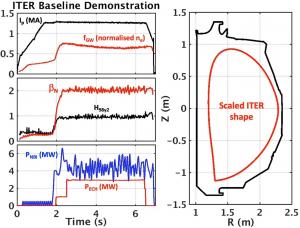Next ITER International School
The 11th ITER International School will be held from 25 to 29 July 2022, hosted by the U.S. Burning Plasma Organization, University of California at San Diego, and General Atomics.
The subject of this year's school is "ITER Plasma Scenarios and Control" with a scientific program coordinated by Peter de Vries (ITER Organization), David Humphreys (General Atomics) and Christopher Holcomb (Lawrence Livermore National Laboratory). As the start of ITER operation approaches, it is timely to address this challenging multidisciplinary topic: the development of integrated operating scenarios and required plasma control to facilitate the ITER goals, particularly for plasmas self-heated by fusion-born alpha particles.
The ITER International School aims to prepare young scientists and engineers for working in the field of nuclear fusion and in research applications associated with the ITER Project. The adoption of a "school" format was a consequence of the need to prepare future scientists and engineers on a range of different subjects and to provide them with a wide overview of the interdisciplinary skills required by ITER.
The first ITER School was organized in Aix-en-Provence, France, in July 2007 and focused on turbulent transport in fusion plasmas. Nine other schools followed on a variety of subjects; presentations from all schools are available on this ITER webpage.
Further information on the 2022 school is available at https://iis2022.burningplasma.org/.


